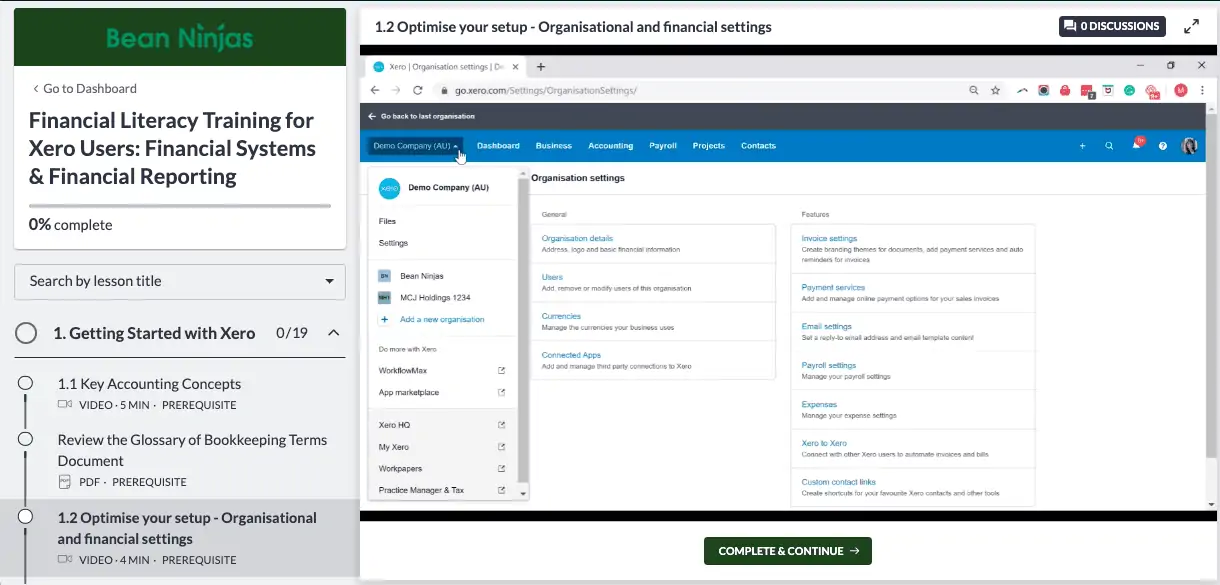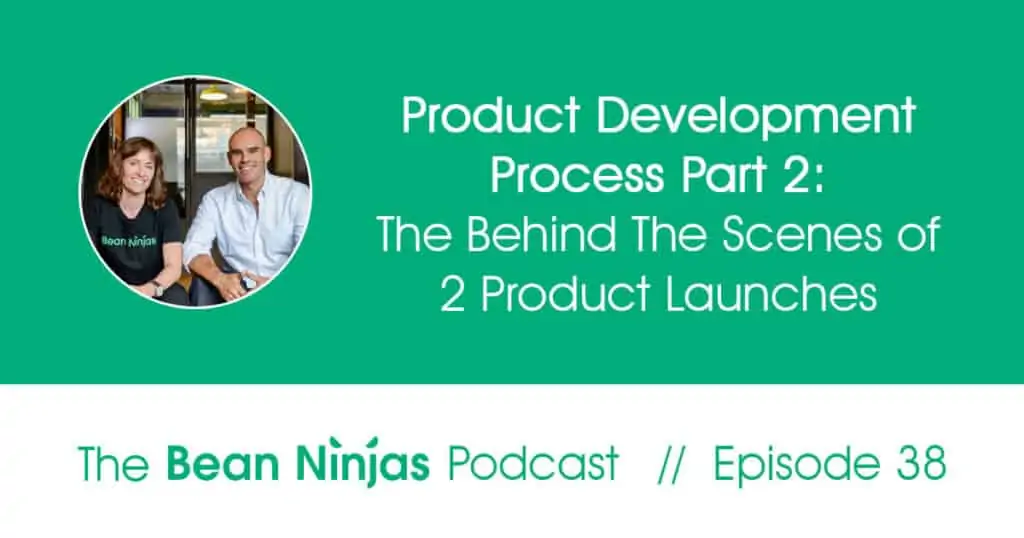Generating leads is an important part of every business. Thinkific, an industry-leader in building and launching online courses, explains why offering free courses is an effective strategy for building a consistent stream of new customers. Learn five essential steps on how to use free content to grow your business.
As an entrepreneur, attracting and retaining customers is a key driver for success. But for many business owners, this can be a challenge. How do you attract more of the clients you want, so you can spend more time nurturing those relationships, and maximizing their lifetime value? Whether you’re a small business, agency, software company or solo-preneur, generating leads is an important part of any strategy to grow and scale your business.
One of the best ways to attract the customers you want is by offering helpful advice for free. Why? Because helping your audience succeed before asking them to fork over their hard earned cash builds credibility, trust and demonstrates you actually have the expertise they’re willing to pay for.
But you might be wondering, how do you use free content to generate leads? A great way to do this is by offering a free online course. By providing a curated learning experience for your audience around a specific challenge they face, you increase the likelihood that they will opt-in to hear from you. This turns your thought leadership into a lead generating machine, giving you the opportunity to convert your new subscribers into paying customers.
If you have no idea where to start or what to put in a free course, don’t worry! This article will give you five specific steps you can follow to build impactful free content and show you examples of how other companies have leveraged free courses to grow their subscribers and sales.
5 Steps for Creating Free Courses to Generate Leads
1) Identify a key problem for your target customer
The first step to creating a free course is identifying who your target audience is, and what problem you’re going to help them solve. To garner interest and sign ups for your course, you’re going to have to get specific. You want the problem you choose to directly relate to the programs, services or products you want to sell.
While you might know who your audience is, it is difficult to know what keeps them up at night without a bit of research. Here are a few ways you can gather information to help you make an informed decision on the topic for your free course:
- Join forums or industry groups
Head over to Quora, LinkedIn or Facebook groups relevant to your industry to discover what questions people are asking. Spending time in these groups will help you get familiar with the types of questions people ask, and find out if they are getting answered. If the same question keeps popping up, there’s a good chance a gap exists where you might be able to help. - Leverage your social media
Keep an eye on the conversations happening across your social network. To make this task a bit easier, you could use a social listening tool like BuzzSumo and set up notifications for certain brands, products, or conversation themes related to your business. Depending on your budget, there are a range of free and paid social listening tools available to help you do this. - Use a keyword research tool
Keyword research tools are great for understanding how keywords are trending over time, providing an indication of how popular a particular topic is. Google’s Keyword Planner is free, and is one of the most used tools out there. - Ask your network!
If you already have an email list, a great way to get input on what your audience wants most to hear is to survey them. For example you could ask, what is the one challenge I could help you solve?, and see if any patterns emerge. Google forms and Surveymonkey both offer free online survey tools to do this.
Bean Ninjas launched an online course on Thinkific in early 2019, Financial Literacy Training for Xero Users, with the goal of helping small business owners make better financial decisions and implement good accounting principles in their businesses.
Before creating any course content, the Bean Ninjas team conducted surveys to gauge interest for the online course and learn more about what people wanted help with. The results of this research revealed that small business owners were looking for niche training on how to keep their costs down, and manage finances with a lean team.
Bean Ninjas founder and CEO Meryl Johson stresses the importance of this first step, saying, “I learned so much from talking to customers about why they would or wouldn’t buy the product. We used this intel in multiple iterations of our sales pages.”
Always make sure that you know who your audience is before you create an online course. Then find a group of those people and survey them to find out exactly what they want to learn from you.
2) Map out your course content
Once you decide which pain points you’re going to help solve, it’s time to identify the content categories you’ll want to take your audience through.
But how do you know what to reveal in your free training, and what to keep behind a paywall?
Whatever your business or industry segment, the key is to set clear learning outcomes that are tied to a particular result for your audience. The objective for your free course should be to demonstrate your ability to move your audience from point A, their current state, to point B, where a key pain point is alleviated. Let’s look at an example.
Paul Ramondo is a digital marketer who consults on building effective sales funnels with a focus on paid advertising. He hosts both free and paid course on Thinkific. Paul’s clients ultimately want better results from their digital marketing efforts and more leads in the pipeline. His paid training addresses this, and covers everything related to building and optimizing a funnel with various marketing tactics and advertising techniques.
To generate leads, he’s developed a free training focused on one aspect of his marketing strategy – how to optimize Facebook ads. By setting this as the specific learning outcome for his free course, Paul is positioned to attract qualified leads looking for help in his area of expertise. Once they complete this free training, he upsells into a paid course to give his students the opportunity to take their marketing strategy to the next level.
Here are three questions to keep in mind when developing the content roadmap for your own course:
- What is the learning outcome you would like your audience to achieve from completing the course?
- Does it clearly solve the pain point you’ve set out to address?
- What are the steps your audience will need to take to achieve their learning goal? This becomes your course outline.
3) Choose a format for your course
Once you’ve decided on your learning outcomes and the content you’ll need to cover for your audience, it’s time to get to work in creating your content.
There are many content formats you can use in your online course. After analyzing the data from over 16 million student experiences, Thinkific found that the top performing courses contain a mix of formats when it comes to delivering the course content.
For example, videos, interactive assignments, community elements, and downloadable resource guides both help keep your subscribers engaged and cater to different learning styles.
Returning to the Bean Ninjas financial literacy course as an example, the team used a variety of content formats to keep the content engaging throughout – it contains a variety of videos, PDF resources, and interactive components to help you track your progress.
Here are some ideas on how to leverage different content formats in your own online course:
- Videos that explain complex concepts. It’s best to keep them between 5-7 minutes long.
- Presentation slides used in tandem with a software like Snagit (to record audio and screen activity. This is a great method for walking through detailed course concepts
- Fillable PDFs are great for creating interactive worksheets and exercises.
- Use assignments or quizzes in each major module, to keep students engaged.
4) Connect your free course to your sales funnel
As you develop your content, make sure to keep in mind how your free course fits into your larger sales funnel. The best way to set yourself up for success and generate qualified leads is to map out how you plan to funnel new leads towards your paid offer, in advance.
A great example of an entrepreneur who has done this well is John Lee Dumas. John is the founder of Entrepreneurs on Fire, a community dedicated to helping entrepreneurs succeed through podcasts, coaching, and training programs. He offers a free course that guides participants through a framework to come up with a solid business idea in just three hours. After students complete the course, they are ready and energized to enroll in his paid course, where he takes them through action steps to implement their business idea.
Ask yourself, once students finish your free course, what action do you want them to take?
Rather than leaving them sitting in your email list, plan out how you would like to continue engaging with them. The more closely aligned your free course topic is to your paid offering, the more likely your audience will see value in continuing their relationship with you.
5) Promoting your free course
Once you’ve created your course and planned how it will fit into your sales funnel – great! It’s time to promote it.
There are several ways to approach marketing your free course, but here are a few tried and true methods to get you started that don’t break the bank:
- Promote through your social media
- Send custom emails to your list of subscribers
- Engage partners to help you spread the word beyond your own network
- Publish related content on your website or blog, driving traffic
- Publish a landing page and share through your social media to capture interest
- And last but not least, try your hand at a few digital ads – like Google or social ads – to gauge interest for concepts covered in your course.
Bean Ninjas leveraged a variety of marketing tactics listed above to spread the word about their online course programs. To hear a summary of their course launch strategy, check out their podcast episode here. Depending on your business maturity and industry segment, you’ll want to test, test and test which promotional strategies work best for you.
Ready to create a free course and start generating qualified leads?
Free courses are a great way to start generating qualified leads. Not only do they raise your profile as an expert in your field, but also serve as a highly effective customer acquisition strategy.
With a little bit of effort, creating your first free course can connect you with a new pool of subscribers who are eager to soak up knowledge from generous and accessible industry experts – just the kind of engaged lead you want nurture through your sales funnel.
I hope these five steps give you actionable insight on how you can use free courses to generate leads for your business. To learn how to grow your business with online courses, download Thinkific’s complete guide to creating and selling online courses.
Have you tried using free courses to grow your business? Let us know how it worked for you in the comments below!










